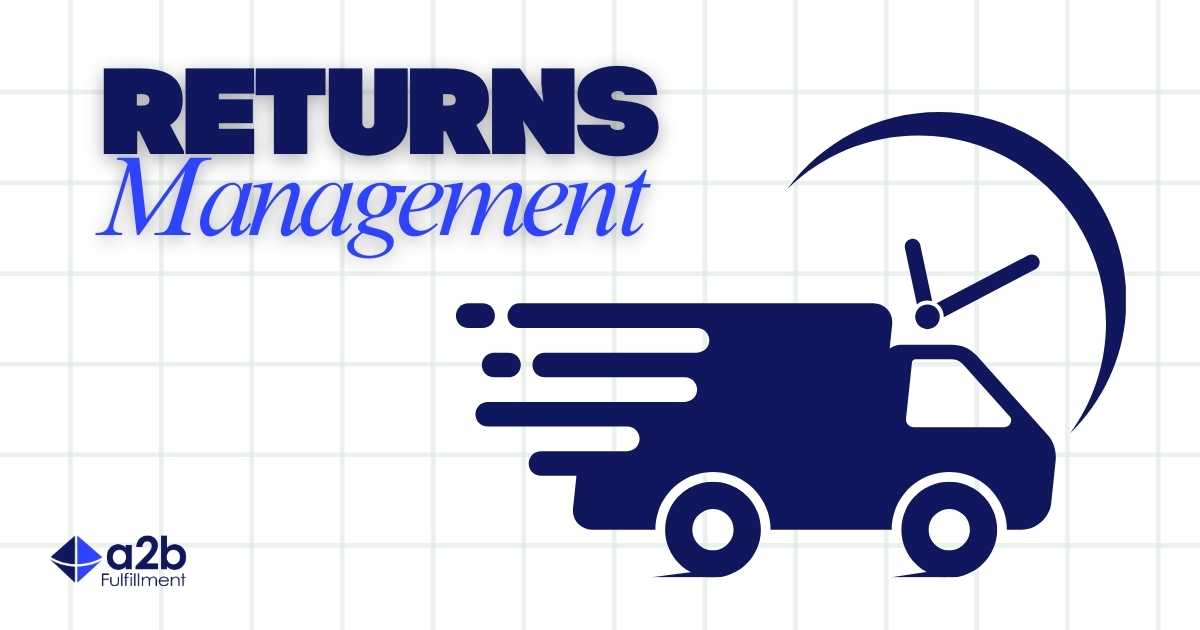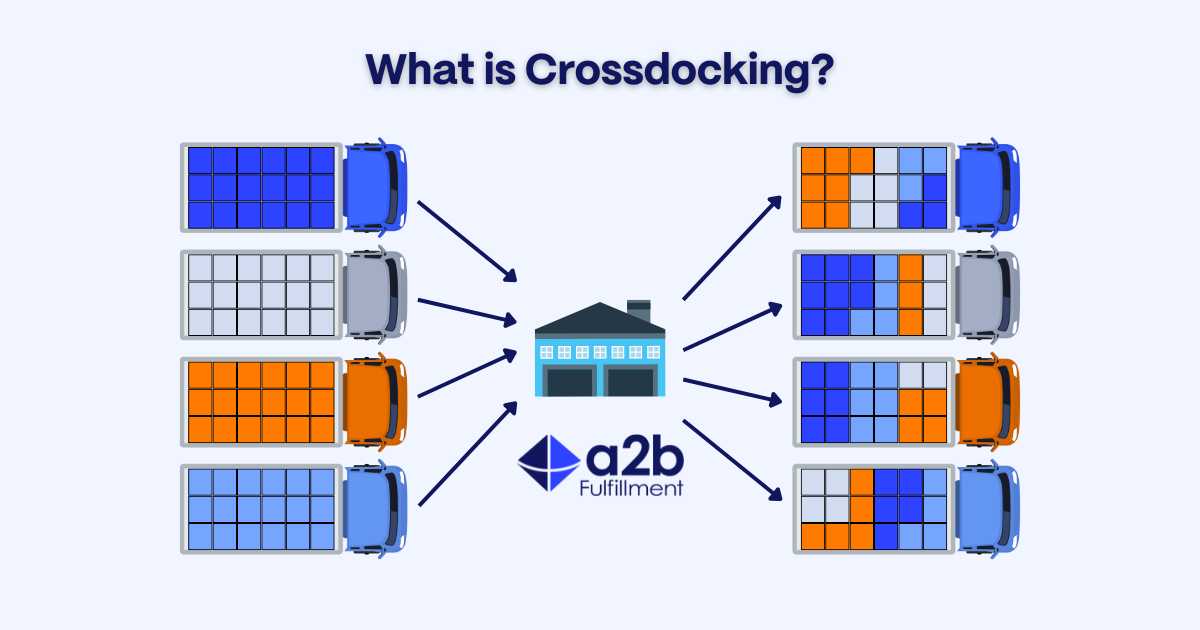Selecting the right Third-Party Logistics warehousing partner is a critical decision for any business looking to optimize their supply chain operations. A 3PL warehousing partner can offer numerous benefits, including cost savings, increased efficiency of order fulfillment, and scalability. By leveraging the expertise and resources of an order fulfillment provider, companies can spend time focusing on other elements of their business while resting assured that their warehousing and logistics needs are handled professionally.
A well-chosen 3PL warehousing partner can significantly impact supply chain efficiency and customer satisfaction. Having the right partner can make a company more efficient and better at meeting customer needs. Therefore, it is essential to carefully evaluate potential warehousing partners to ensure that they align with your business goals and are the best fit for your company’s needs.
Understanding Your Business Needs

When selecting a 3PL warehouse partner, it's crucial to know your business's specific requirements. This includes factors such as storage space, volume, scalability, and the services you will require from your new partner. Understanding these needs will help you make an informed decision when choosing a warehouse partner. Considering all aspects of your business operations before making a decision is important.
Assessing Storage Requirements
Types of Products Stored: Consider the size, weight, and fragility of your products. Whether you deal with bulky items, delicate electronics, or perishable goods, your 3PL partner must have the ability to handle your specific product efficiently.
Seasonal Storage Needs: Many businesses experience demand fluctuations throughout the year. A capable provider should offer flexibility to scale up or down based on seasonal changes in inventory levels, ensuring your storage needs are always met without unnecessary costs during slower periods or stockouts during peak times.
Special Storage Requirements: Certain products may require specialized storage conditions like temperature control or increased security measures. Assess whether the 3PL warehouse can accommodate these needs effectively and best fulfill the needs of your company.
Evaluating Volume and Scalability

Current and Projected Volume of Goods: Evaluate your business’s current and projected inventory volume and turnover. When choosing a3PL look for one that is large enough to accommodate your current inventory needs as well as accommodate an extra influx of inventory if needed. This gives a business the option to grow and scale without being hindered by a 3PL’s lack of resources.
Flexibility for Growth or Fluctuations: Consumer demand often fluctuates; a 3PL must have the resources and capabilities to fulfill your business’s needs regardless of the circumstance. Your 3PLwarehousing partner needs to be able to adapt to fluctuations in demand. This could be caused by seasonal changes, market trends, or sudden increases in sales.
They should have sufficient storage space and resources to manage these changes efficiently. They should have enough storage space and resources to handle these changes effectively.
Defining Service Requirements

Value-added Services: Assessing the specific fulfillment services that a 3PL offers can play a significant role in deciding which 3PL to warehouse with. Assess if your business needs a 3PL that provides value-added services like kitting, labeling, or returns management. These essential services can streamline operations and increase customer satisfaction. By choosing a 3PL that provides all of the order fulfillment and value-added services that your business needs, in addition to quality warehousing services, you will streamline your operations and reduce costs.
Customization Needs: Understand the specialized needs of your products such as special packaging or assembly. These specific needs will play a huge role in selecting a 3PL warehousing provider.
For example, if your company values custom packaging to build brand awareness, a 3PL provider like Amazon FBA (fulfillment by Amazon)would be a poor choice because FBA only allows for standardized packaging. The3PL that your business chooses to work with should be able to tailor their services to your business’s specific needs and provide your customers with the best experience possible.
Geographic Location and Network:
Choosing the right geographic location and network for your3PL warehousing partner is extremely important as it directly impacts operational efficiency, customer satisfaction, and a company’s ability to meet current and future customer demands.
Proximity to Key Markets
Identifying the target market of a product and selecting a3PL with strategically placed locations near that market can play a major role in reducing shipping times and costs. This proximity enhances delivery speed and therefore customer satisfaction and loyalty.
Accessibility and Transportation Infrastructure
Choosing a 3PL with great access and accessibility to major highways, ports, and airports is once again important to shortening shipping times but is also important if a company wants to expand its market reach to target emerging markets. If a 3PL is located near these major transportation hotspots it can provide the flexibility to reach a much larger market if needed.
In addition, a 3PL that provides multiple transportation options for shipping products results in even more flexibility. This allows companies to distribute their products effectively as well as meet diverse customer demands.
Multi-Warehouse Network

Consider partnering with a 3PL that has multiple strategically placed locations. Not only does having more locations greatly increase the reach and shipping speed from the 3PL but it also provides geographical diversification which reduces the risk of supply chain disruptions.
Technological Capabilities
The technological capabilities of a 3PL are another factor to look at when deciding which 3PL to warehouse with. Technological capabilities can give companies a unique edge on competition by improving their inventory management, demand forecasting, and inventory metric accuracy.
Warehouse Management Systems (WMS)

Partnering with a 3PL that has an advanced warehouse management system provides companies with the ability to track inventory status, quantity, and distribution in real-time. Not only does this increase the accuracy of a business's inventory management to prevent stocking issues, but a WMS allows businesses to make calculated decisions based on their real-time data.
Furthermore, choosing a 3PL that allows for an easy and seamless integration of the WMS into your pre-existing platforms is essential. Partnering with a 3PL can initially be very time-consuming and an easy integration of the WMS system to a business’s pre-existing systems can shorten that process, reducing costs, and allowing a company to get started quickly.
Automation and Robotics

Look for a 3PL partner that has implemented the use of various robotics and automations. Robotics and automation increase operational efficiency and reduce human error while also lowering labor costs. Technologies like conveyors with zone diverts, in-line QC weight checks, sortation precision, and shipping automation work to streamline inventory management as well as order fulfillment.
Data Analytics and Reporting
Consider the 3PL’s data analytics and reporting capabilities. 3PLs that take advantage of advanced business intelligence software can provide businesses with powerful forecasts and analytics that allow clients to stay ahead of demand fluctuations and reduce the risk of inventory issues.
a2b Fulfillment, for example, built its business intelligent platform, Engage, which allows a2b’s partners to see inventory levels, order status, shipments status, receipts, and returns all in real-time. Furthermore, Engage can analyze the historical data of a product to identify trends, areas of improvement, and even potential growth opportunities.
Service Quality and Reliability
Picking a 3PL warehousing partner that is reliable and consistently provides the highest quality of service is extremely important. However it can be difficult to assess a 3PL’s performance while shopping around.
Performance Metrics and KPIs
A performance-driven 3PL will track common performance metrics and Key Performance Indicators (KPIs) like order accuracy and fulfillment speed. Measuring such KPIs gives valuable insight to the level of operational efficiency and reliability of the 3PL. The transparent reporting of a 3PL on these measures is also essential as it allows you to hold your partner accountable and ensure that the 3PL’s performance meets the standards of your company.
Customer Service and Support
Evaluate the quality of customer service and support provided by the 3PL. Dedicated account managers who understand your business are extremely important. Assess their responsiveness and problem-solving skills and make sure that high service levels are maintained regardless of the circumstances. Also, look for 3PL’s that have experience working with products in your niche to receive the best quality of service specific to your business.
Reputation and References
Research the reputation of the 3PL by examining client testimonials and case studies. Positive feedback and successful case studies indicate that a 3PL is reliable and provides quality services. Furthermore, consider the significance of industry certifications and awards as proof of commitment and credibility of a 3PL.
Cost Considerations
When selecting a 3PL warehousing partner it is important to understand the cost in proportion to the benefits and understand what to avoid in a contract.
Pricing Models
Compare the different pricing structures: per pallet, per order, per square foot, etc. Understand the advantages and disadvantages of each for your volume and storage needs and choose the one that best fits the goal of your business. Also, be on the watch for hidden fees and surcharges. These charges are easily overlooked and can be costly. Some examples include peak season handling costs, aged inventory surcharges, and removal and disposal fees.
Cost-Benefit Analysis
Conduct a cost-benefit analysis to weigh the cost compared to the quality of service and benefits your business would receive from a 3PL.Consider how efficient 3PL warehousing can lead to long-term savings through reduced overhead costs, improved inventory management, and enhanced customer satisfaction. Looking past the initial price tag and assessing the overall value the 3PL brings to your operations is important.
Terms of the Contract and Flexibility
Check the length of the contract and the termination clauses carefully. Ensure flexible contractual terms to change services that are prepared to change as your business grows and develops. A flexible 3PL partner should allow you to scale operations up or down in terms of growth or seasonal fluctuations without being locked into rigid terms.
Risk Management and Compliance
Safety and Security Measures
Assess the importance of the security of your inventory. Warehouses are often the targets of robbery as they can hold expensive goods and often have minimal security measures. Assess if your product’s value and if it is worth spending slightly more to keep that product safe and secure.
Regulatory Compliance
Verify that the 3PL partner complies with all industry regulations and standards. Non-compliance with these standards can lead to consequences, including fines, legal issues, and operational disruptions. A compliant 3PL ensures that your supply chain operates within the necessary guidelines, minimizes risks, and maintains smooth business operations.
Disaster Recovery and Contingency Planning
Assess a 3PL’s preparedness and risk of natural disasters and other emergencies. Assess the 3PL’s disaster recovery and contingency plan and ensure that it is in the best interest for the continued operations of your business. Look for a 3PL’s backup plans such as alternative storage facilities, data recovery protocols, and emergency response strategies. The more prepared a business is for unforeseen events the less your business’s operations will be affected.
Additional Tips and Resources
Tips for Conducting a Thorough Vendor Evaluation
Site Visits and Facility Tours
Schedule visits to the 3PL’s facilities to observe their operations in person. This allows you to assess the operation's efficiency and organization. Pay attention to the technology in use, safety protocols, and overall working environment. Facility tours provide unique insights into the3PL’s capabilities and help verify that their operations meet your business’s standards.
Requesting Detailed Proposals and Quotes
Ask potential 3PL partners for comprehensive proposals that include a breakdown of their services, pricing models, and value-added offerings. Compare these proposals to understand the cost implications and service quality. Analyzing these quotes can help you identify hidden fees, understand the services available, and evaluate the overall value that the 3PLprovider offers to your business.
Conclusion

Starting to work with a 3PL can take a lot of time. Once you decide to store your products with a company, it can be hard to switch to a different provider easily. This means that choosing the right 3PL provider that fits your business's needs and goals is one of the biggest decisions that a business can make.
A good 3PL can improve your business operations by increasing efficiency, reducing costs, and accelerating deliveries. This can result in higher customer satisfaction and ultimately lead to long-term growth. Therefore, the meticulous analysis of a 3PL’s locations network, technological capabilities, service quality, cost, risk management, and the ability to customize operations to fit your business’s specific needs is essential to your business’s success and future.
As you assess your needs and start your search for the ideal3PL partner, consider a2b Fulfillment. With over 20 years of experience as a3PL, more than one million square feet nationwide, and awarded Top 3PL of the year, by Multichannel Merchant, 8 years running, a2b Fulfillment is more than qualified to work with your team to provide the best possible 3PL and warehousing services to your business.
Learn more about our 3PL warehousing services






